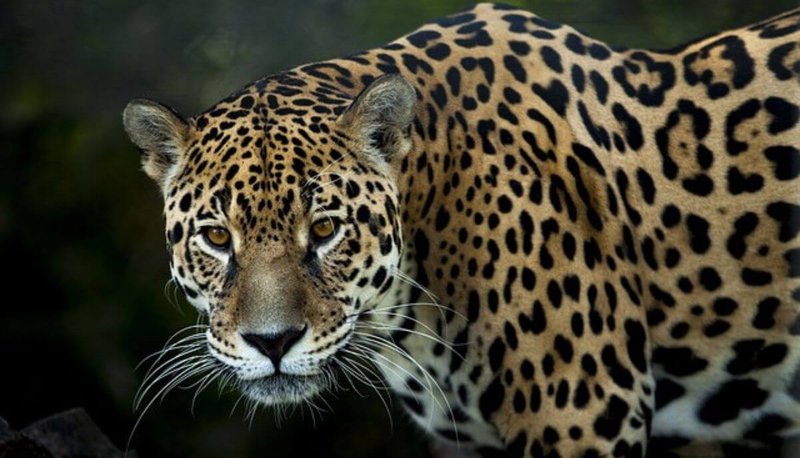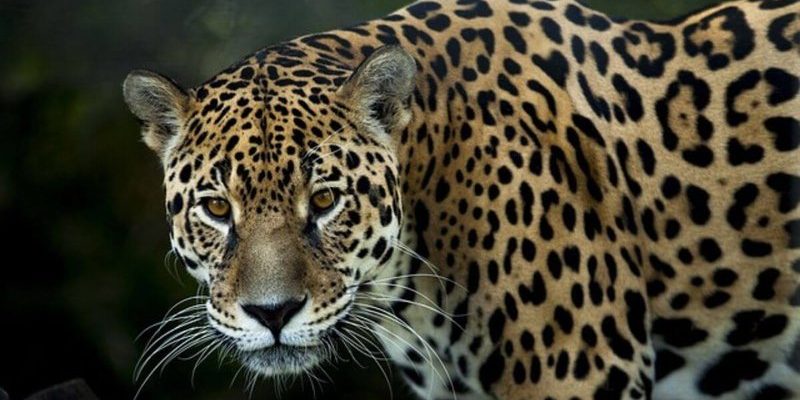
Imagine being in the wild, surrounded by dense trees, the air thick with humidity and the sounds of nature all around you. Suddenly, you catch a glimpse of a jaguar darting through the underbrush. Beautiful as it is, your heart might race. Here’s the thing: while jaguars are indeed capable of causing harm, the reality of human-jaguar interactions is more complex than it seems. Let’s dive in to understand the behavior of these incredible felines, what drives them, and whether they really pose a threat to us.
Understanding Jaguar Behavior
Jaguars are solitary creatures, mostly found in the forests and wetlands of Central and South America. They’re known for their strong territorial instincts and hunting prowess. Unlike some big cats that tend to stalk their prey openly, jaguars have a different hunting style. They prefer to sneak up on their prey and pounce with astonishing speed and strength. This hunting technique is part of what makes them so formidable in the wild.
You might think of a jaguar as a mix of both a lion’s pride and a leopard’s stealth. Although they’re not social animals, they are highly adaptable, able to thrive in various habitats from dry savannas to dense rainforests. This adaptability also means they can sometimes intersect with human environments, raising questions about safety and danger.
Human Encounters with Jaguars
Most encounters between jaguars and humans tend to be non-confrontational. In fact, jaguars typically avoid people. They are naturally wary of humans and prefer to steer clear of potential threats. However, human activities—like deforestation, agriculture, and livestock farming—can push these big cats into closer contact with us.
Imagine living in a rural area where farming is common. A farmer might find a jaguar lurking nearby, curious but cautious. This proximity can lead to conflicts, especially if the jaguar views livestock as prey. In such cases, the jaguar may get defensive, especially if it feels cornered or threatened. But it’s not the typical outcome. Most interactions end without any harm, as the jaguar simply retreats.
When Jaguars Attack: The Factors
Though jaguar attacks on humans are rare, they can occur under specific circumstances. Injured or starving jaguars may act more aggressively if they feel threatened or desperate. Here are a few factors that can lead to danger:
- Habitat Loss: As humans encroach upon jaguar habitats, these animals have fewer places to hunt and live, leading to stress and aggression.
- Territorial Defense: If a jaguar feels that its territory is being invaded—especially by people or pets—it may defend itself.
- Illness: A sick or injured jaguar may act unpredictably, as it could feel vulnerable and threatened.
Understanding these factors is crucial. It helps us see that most jaguar behavior stems from instinctual reactions rather than a desire to harm humans.
Why Jaguars Don’t See Us as Prey
You might be wondering why jaguars don’t usually pose a threat to humans. One of the main reasons is that humans are not part of their natural diet. Jaguars primarily hunt medium-sized animals like deer, capybaras, and even caimans. Their impressive jaws can crush bones, a testament to their specialized hunting skills.
Though they have the strength and capability to attack humans, it’s not a natural behavior for them. Most attacks on people are either the result of a jaguar being provoked or feeling threatened. It’s important to remember that they are wild animals, instinctively wary of humans.
What to Do in Jaguar Territory
If you find yourself in an area where jaguars live, it’s wise to take some precautions. Here are a few tips to stay safe:
- Make Noise: Jaguars are generally shy. Making noise can alert them to your presence and encourage them to avoid you.
- Avoid Walking Alone: There’s safety in numbers. Try to travel in groups when hiking or exploring wildlife areas.
- Avoid Feeding Wildlife: Feeding animals attracts them and can lead to dangerous encounters with jaguars.
By respecting their space and being mindful of your surroundings, you can enjoy the beauty of their environment while minimizing risks.
Conservation and Coexistence
In the end, the key to reducing jaguar attacks lies in conservation and understanding. Protecting their habitats is essential for their survival—and ours. By preserving rainforests and reducing human impact, we can create a balance where jaguars can thrive without threatening human safety.
Efforts by various organizations focus on educating communities about jags and promoting coexistence strategies. For instance, some farmers are implementing protective measures, like livestock enclosures, to reduce conflicts.
The Bottom Line: Embracing Nature’s Wonders
So, can the jaguar be dangerous to humans? The answer is more nuanced than a simple yes or no. While the potential exists, it’s important to recognize that these majestic creatures prefer to avoid us and are more threatened by human activities than we are by them. By fostering a deeper understanding of jaguar behavior and promoting conservation efforts, we can appreciate their role in our ecosystems while ensuring safety for both humans and these beautiful cats.
Next time you think about jaguars, remember that with a little respect and knowledge, we can appreciate these incredible animals without fear. Nature has a way of balancing itself, and by being informed, we can help maintain that balance.

